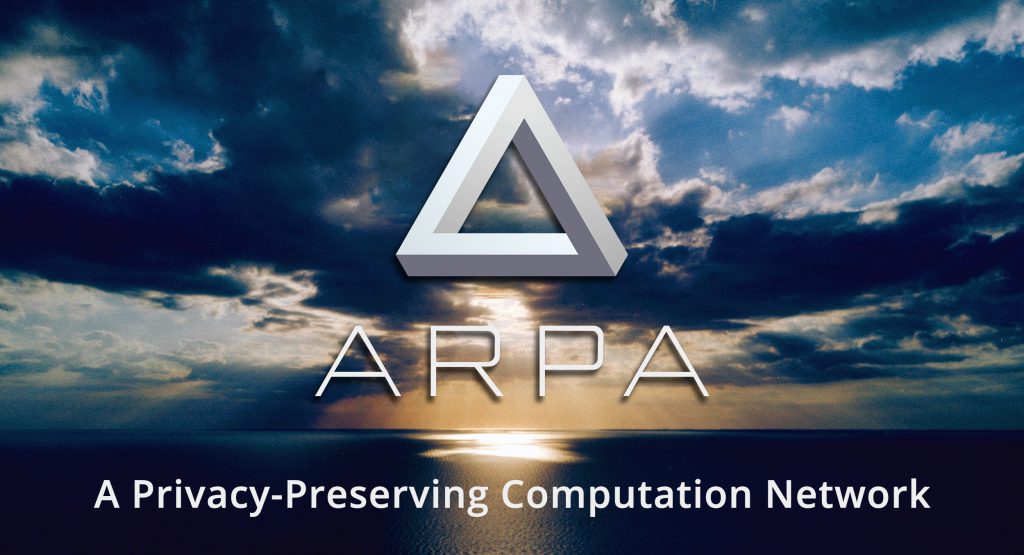
ARPA Chain (ARPA) functions as an industrial-level decentralized computational network. The protocol is unique in that it is a blockchain-agnostic layer-2 scaling solution. The platform enables users to share unused storage and provide computer processing to earn rewards. Additionally, the network integrates additional privacy features such as cryptographic private smart contract execution.
What Problems Does ARPA Chain (ARPA) Solve?
ARPA seeks to provide relief for a variety of different issues. Like most layer 2 solutions, the protocol provides more scalability to the market. The protocol leverages a highly scalable infrastructure and computational sharding to improve performance. Additionally, the developers went to great lengths to simplify new user and developer onboarding.
How Does ARPA Chain (ARPA) Work
The ARPA Chain (ARPA) ecosystem consists of a custom blockchain, utility token, and multiple proprietary systems. The network leverages proxy smart contracts as a bridge to link the blockchains and secure the network. The network structure consists of nodes, providers, consumers, and backers.
Incorrect Data
Another major problem that many computational networks suffer from that ARPA helps to eliminate is incorrect data. There is always an added risk whenever computations are done off-chain. These off-chain transactions are often coming from a centralized system which makes them a weak point. ARPA integrates proprietary smart contracts to ensure that all outsourced data remains cross-referenced. The protocol goes as far as to verify the computations via a Message Authentication Code.
Benefits of ARPA Chain (ARPA)
There are a lot of benefits that make ARPA an interesting project to watch. The network integrates privacy-preserving smart contracts. These unique protocols enable networks to share private information without revealing any data to third parties. The entire system relies on enterprise-grade encryption over a redundant decentralized network. As such, developers can build privacy-preserving Dapps on blockchains compatible with ARPA
Interoperability
Another major benefit of ARPA is that it improves interoperability in the market. As an agnostic layer-2 solution, more developers can utilize its privacy features to create more useful and immersive Dapps. The network is compatible with most top-performing smart contract programmable networks including Ethereum and EOS. This flexibility enables developers to utilize the blockchain that best suits their specific needs and added privacy and scalability.
Scalable
ARPA Chain eliminates scaling concerns through the use of sharding. Sharding is a storage technique that compartmentalizes data and allows for off-chain computations in TEE (Trusted Execution Environments). Sharding provides ARPA Chain with virtually unlimited data storage capacity.
Multi-Party Computation (MPC)
The MPC protocol is a core component of the ARPA Chain. This protocol is responsible for separating data utility from ownership. It leverages Zero-knowledge proofs to enable multiple users to collaboratively analyze data and extract data synergies. Zero-knowledge proofs are a technology that improves security by eliminating the need to share sensitive information to confirm it. Notably, the MPC protocol is split into two layers, the processing, and computational layer. The latter is responsible for smart contract execution.
Protocol Layer
The ARPA Chain also leverages a dual-layered approach. The first layer is called the protocol layer. This system operates as a permissionless public blockchain. Anyone can join this network. You can join and leave as you like without any penalties. The protocol layer enables users to share their computational power to secure profits.
Computational Layer
The second layer of the network is the computational layer. This system is responsible for the completion of MPC processes. These are network crucial nodes that must meet certain criteria to qualify. Additionally, this layer is where nodes earn rewards or are penalized for malicious actions.
Consensus
The ARPA Chain utilizes a variety of unique consensus mechanisms to remain valid. The Proof-of-Correctness mechanism replaces the PoW mechanism. This system accounts for the fact that, unlike a financial network, only a select few nodes are handling specific computations rather than the entire network. As such, the system was set up to enable the network to delegate certain nodes to handle code execution and remain secure.
Proof-of-Computation
The Proof-of-Computation mechanism is responsible for monitoring the amount of work a node has done. The system registers the node’s participation level and releases rewards based on their efforts. Specifically, the system accomplishes this by counting the triples consumed during the computational process.
Proof-of-Security
The Proof-of-Security system is used to verify computations conducted off-chain in TEEs. TEEs are off-chain networks that contribute to computational power. This system ensures that these parties conducted the computations correctly and in a timely manner. This component is critical as incorrect data on a blockchain can lead to problems in the future.
ARPA
ARPA is the main utility token for the network. Token holders can access all the network’s features and functions including paying for data or renting computational power or space. The ARPA token is used to cover your computation cost, data renting, model usage fees, and to send value. You can also trade this token on a variety of top-performing exchanges. Notably, ARPA is an ERC-20 token with a capped supply of 2,000,000,000 tokens.
Governance
ARPA token holders can also vote on future upgrades to the network. The system leverages a community governance protocol to ensure that the average user is heard. Community governance systems provide networks with more cohesion and ensure that those who are vested in a project have a say. In the ARPA Chain (ARPA) system, your vote gains more say based on how many tokens you hold.
Bottom Line
The ARPA Chain (ARPA) provides a variety of easy-to-implement solutions to developers and users. The network improves privacy which is always a big plus for crypto users. Additionally, the fact that it can be used on a variety of blockchains improves the project’s overall value. For these reasons and many more, ARPA is a good project to monitor closely.



















